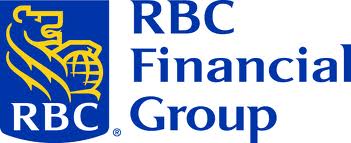282 Calgary Trail NW, Edmonton, Alberta
P: 780-439-7000
F: 866-293-5424
Tuesday, May 24, 2011 - Bank of Canada likely to delay rate hike


RBC ECONOMICS RESEARCH – DAILY ECONOMIC UPDATE – May 24, 2011
Global uncertainty and bumpier near-term growth profile for Canada likely to delay timing of BoC rate hike
Canada's economic news has been mixed in recent weeks although it is still consistent with the economy posting a very strong first-quarter 2011 growth. Data released for March indicated that manufacturing, wholesale trade, and housing market activity were solid although the retail sector suffered a disappointing decline in constant dollar terms. On net, our monitoring shows that the economy likely grew by 0.3% in March more than fully reversing February's 0.2% dip. For the quarter, the sum of the monthly GDP changes is consistent with growth of 3.7% with the risks on the upside.
Reports for April are limited, with housing activity, both starts and sales, posting moderate declines while the labour survey showed a stronger than expected increase in employment and a dip in the unemployment rate to 7.6%. Our monitoring of the economy suggests that the supply disruptions in the auto industry resulting from the Japanese natural disasters will weigh on manufacturing activity in April and May, and in turn will likely slow the pace of exports in the period. We, however, expect that the easy level of financial conditions, well functioning banking sector, and cash-laden corporate sector will result in investment continuing at a robust pace. On balance, we remain comfortable with our forecast of real GDP growth of 2.8% annualized in the second quarter of 2011, although unlike in the first quarter where the risks to our forecast are to the upside, the risks to our second-quarter growth forecast are to the downside. On net, our 2011 growth forecast is unchanged at 3.2%; however, there is the risk that the path to get there may be more volatile relative to our current forecast.
Canada's inflation performance is largely following the script of our recent forecast with the core measure expected to fall again in May while the headline rate is likely to ease back to average 3% in the second quarter, from 3.3% in March and April, as energy prices slipped into a lower trading range in May.
Complicating the outlook are global developments with the European sovereign-debt crisis bringing fiscal and debt rating concerns to the forefront for investors, thereby resulting in a round of ‘risk-off’ trading that weighed on global equity markets and commodity prices. Additionally, the slippage in the flash estimates for the May purchasing managers' indices in Europe and China revived worries about the ability of the world economy to maintain its upward momentum. In the US, economic surprises have been on the downside with RBC's economic surprise index falling into negative territory for the first time in six weeks. As the end of QE2 approaches, these downside surprises injected more volatility into financial markets, and investors turned to government bond markets in Canada and the US for safety. Despite the gearing down of some activity readings in May, support from the low level of interest rates is likely to result in the US economy rebounding after a lacklustre first quarter, and we maintain our call for a 4.1% annualized increase in the second quarter.
Faced with the revival in nervousness about the prospects for the global economy, particularly the European financial and government sectors, and the uncertainties about the spillover effects into Canada combined with already present downside risks to domestic growth in the second quarter, the Bank of Canada is likely to remain on the sidelines longer than we previously thought. Having said that, the overall outlook for the economy is unchanged with growth forecasted at 3.2% in 2011 and 3.1% in 2012. Additionally, the persistent strength in the housing market and commensurate growth in household credit means that the Bank will not be able to stay on the sidelines for too long without jeopardizing a stronger than anticipated pick up in inflation pressures. Against this backdrop, we expect that the Bank will maintain its policy rate at 1.00% at its fixed action date next week with an eye to restarting the process to lessen the amount of policy stimulus in September. Our forecast for the overnight rate at the end of 2011, therefore, is reduced to 1.75% from 2.00%. We maintain our call that the overnight rate will be 2.5% in mid 2012 as the economy reaches its productive capacity.
Dawn Desjardins, Assistant Chief Economist, RBC Economics
Archives
Categories



